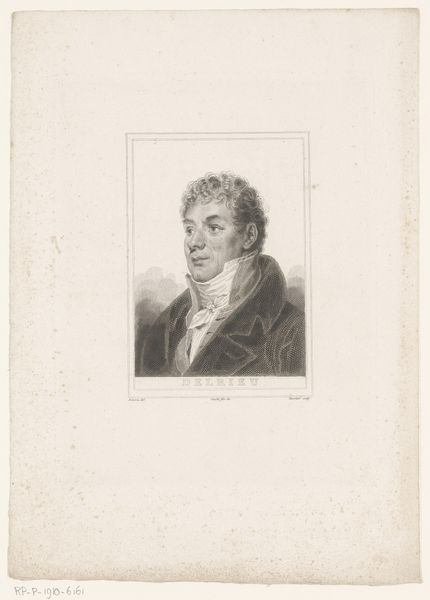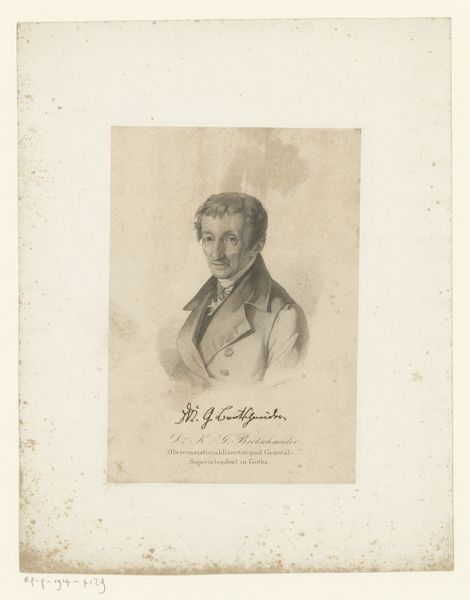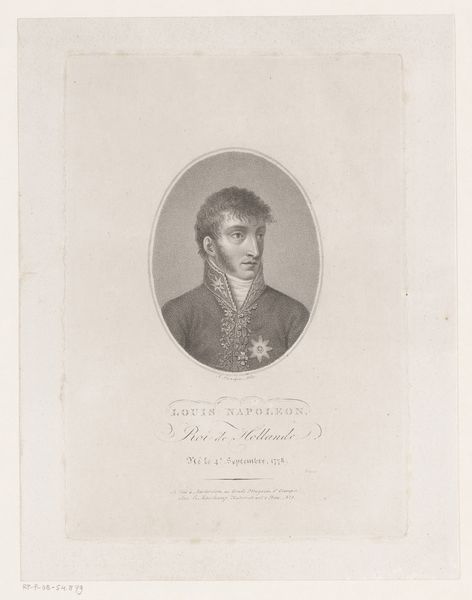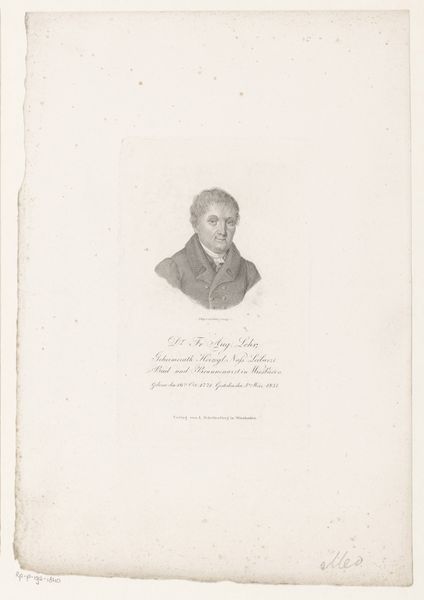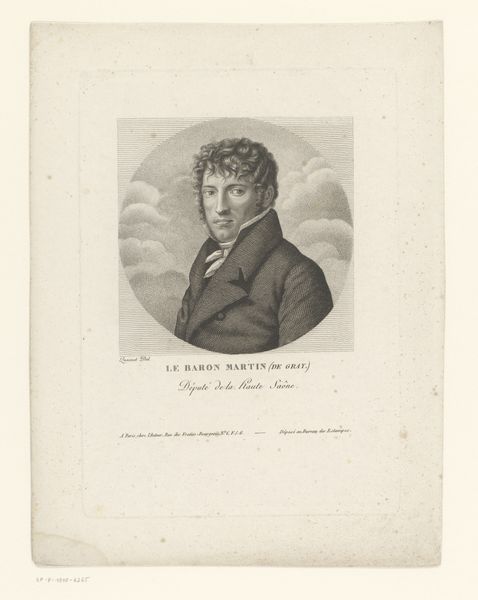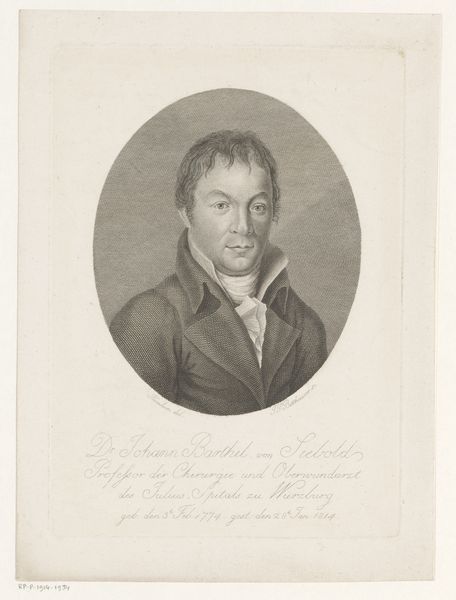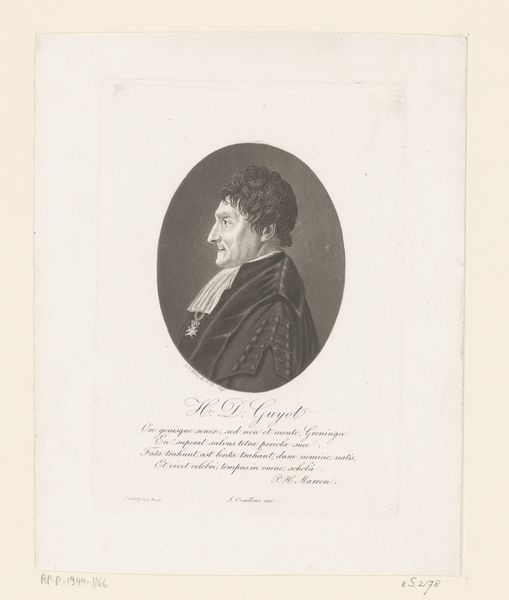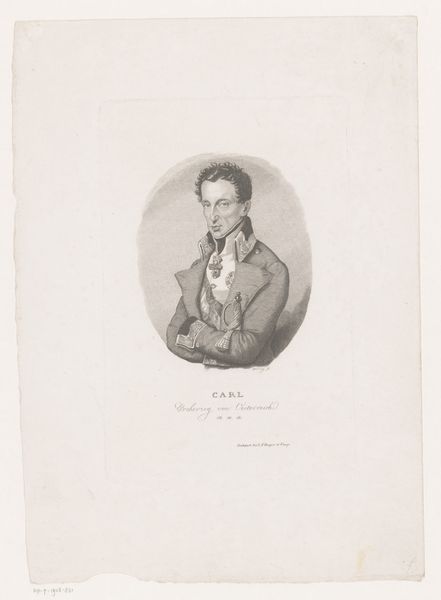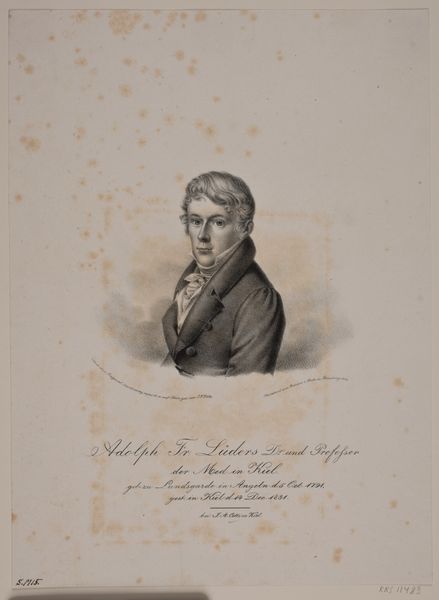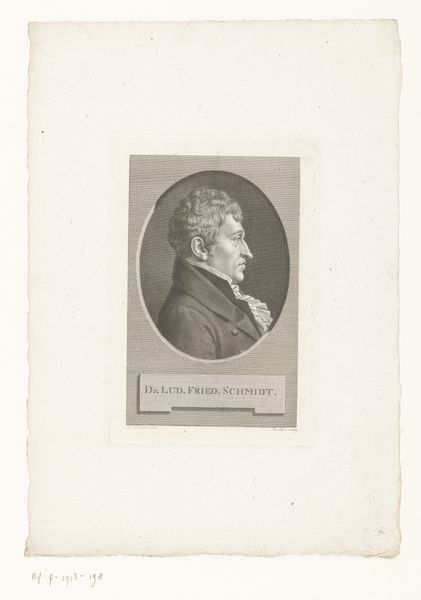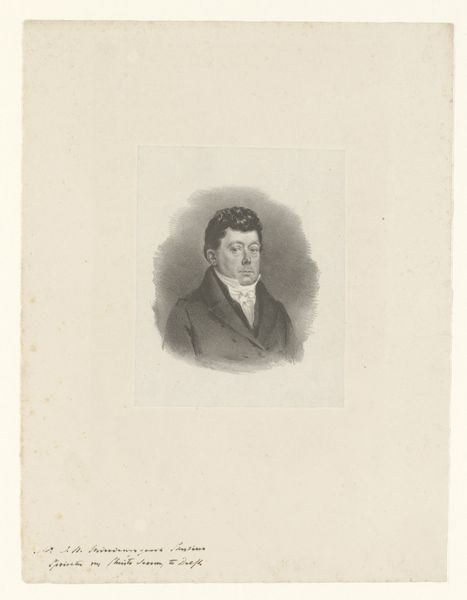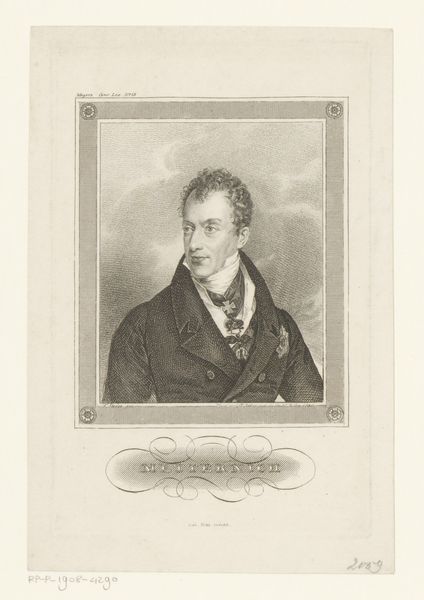
drawing, pencil
#
portrait
#
pencil drawn
#
drawing
#
neoclacissism
#
light pencil work
#
parchment
#
pencil
#
realism
Dimensions: height 588 mm, width 451 mm
Copyright: Rijks Museum: Open Domain
Editor: Here we have Joseph Nicolaus Peroux’s "Portret van Georg Friedrich Creuzer," created sometime between 1816 and 1849, rendered in pencil. It strikes me as incredibly precise and thoughtful. How do you interpret this work, particularly in the context of its time? Curator: The sitter’s piercing gaze invites us into a world steeped in intellectual rigor and the weight of classical ideals. Look at the way the artist uses light and shadow to sculpt Creuzer's face, creating a sense of gravitas. Do you notice any specific elements that remind you of neoclassical principles? Editor: I see that controlled linearity, particularly in his jacket and the sharp definition of his jawline, very typical of neoclassicism. It feels less emotive than other portraiture I’ve seen. Curator: Precisely. That restraint is deliberate. The portrait isn't merely a likeness; it's an attempt to capture Creuzer’s essence as a scholar of ancient symbolism. Consider his association with the burgeoning field of mythology at the time. In what ways might his scholarly work impact our viewing of the portrait itself? Editor: I guess his intense expression would relate to how serious he would be in the pursuit of this scholarship. I see how the artist used light and shadow to create a sense of depth. It is definitely a captivating expression of his inner thoughts and how others perceived his identity. Curator: The very act of portraying Creuzer, a scholar of symbolism, in this medium creates a fascinating interplay between the visual and the intellectual. Images, you see, carry their own weight and meaning, a legacy that shapes our perception. What do you think you will take away from this experience? Editor: That context really enhances my understanding, seeing him as more than just a face. I’ll definitely pay more attention to the historical background moving forward.
Comments
No comments
Be the first to comment and join the conversation on the ultimate creative platform.
